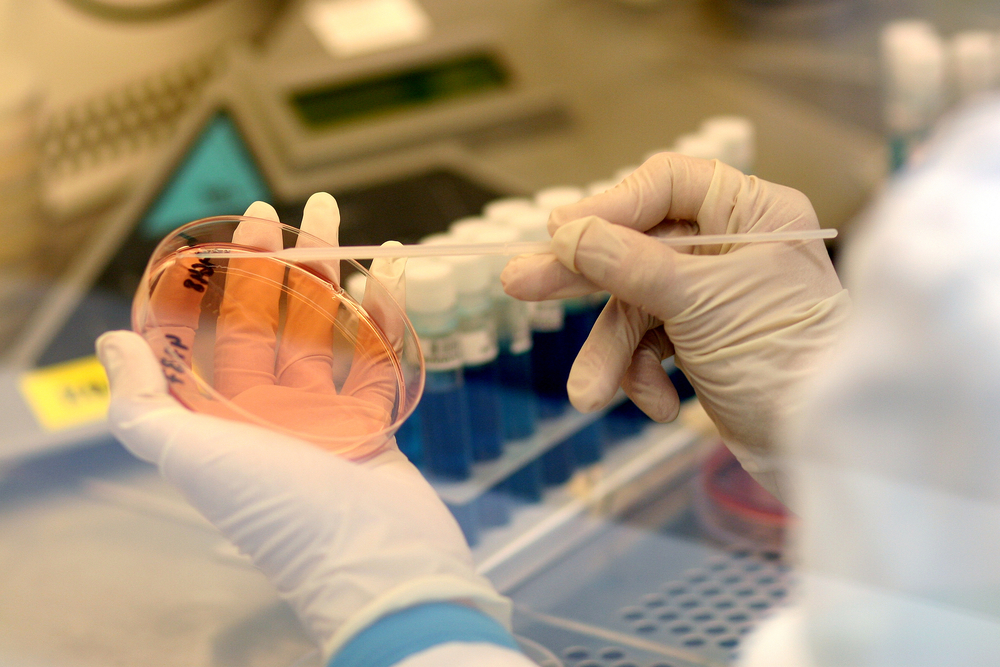A New Drug Being Developed by Vertex and Parion Seeks to Treat All CF Patients

The CF community waits with warm hearts and open arms for the approval of ORKAMBI, the combination drug by Vertex Pharmaceuticals, slated to be approved next month on July 5. The excitement is well deserved because it is the first time that those with CF who have two copies of the most common mutation, F508del, will be eligible to take a drug that will correct the underlying cause of the disease. However, like all things new there is still room to improve the medication due to modest phase 3 clinical results and, in addition, just under 50 percent of the CF population will still be left without an option to take a mutation correcting drug.
It seems that these concerns have not gone unnoticed by Vertex, as this past week it was announced that Parion Sciences will receive $80 million in funding from Vertex in a collaboration to develop a novel CF medication. Unlike Vertex’s CF modulators, ivacaftor (kayldeco) and lumacaftor (VX-809), the drug will be eligible for all CF patients and may be used in future trials to increase the efficacy of Orkambi.
Those familiar with CF and its therapies will be well acquainted with Vertex, who has helped to pioneer mutation-specific therapies, but fewer may know the second company in the collaboration, Parion Sciences. Parion describes itself as “a development stage biopharmaceutical company dedicated to research, development and commercialization of treatments to improve and extend the lives of patients with innate mucosal surface defense deficiencies of the eye or airway.” The company over the past years has begun development of two drugs, P-1037 and P-1055, which will help to target channels responsible for the dry linings of airways in CF patients that make it difficult to move mucous out of the lungs.
The company originated as a result of technology developed from University of North Carolina, Chapel Hill. Parion originally sold rights for the drugs to Gilead Sciences, Inc., in 2007 but then entered a second deal with Gilead in 2014 to reacquire the drug rights. Then in 2014 the company received $3 million from the Cystic Fibrosis Foundation Therapeutics (CFFT), a research affiliate of the CF Foundation, to continue development of P-1037 for use in those with CF.
P-1037 has drawn attention of both the CF Foundation and Vertex due to its potential to be used in all CF patients regardless of their mutation. The drug functions as an epithelial sodium channel (ENaC) inhibitor which helps to hydrate the airways in patients better assisting the movement of mucous from the lungs.
Why ENaC Inhibitors May Prove Beneficial For Those With CF
To better explain the action of the drug, it is necessary to explain a bit of the physiology of the cells that line the lungs passageways. In a normal functioning lung, there is what is known as airway surface liquid (ASL), which helps to support the cilia, finger-like structures extending from the cells, while also helping to float mucous above the cells and their cilia.
Mucous plays a key role in the defense of the body, especially within the lungs, by helping to trap foreign particles and bacteria. Since the mucous sits atop the ASL, the cilia are able to beat in wave-like motions to gently move it from the lungs’ passages in a process known as mucocilliary clearance.
The two cellular channels that help to maintain the liquid in the ASL are the cystic fibrosis transmembrane conductance regulator (CFTR) and the epithelial sodium channel (ENaC). The CFTR promotes the ASL by allowing chloride (Cl) to pass out of the cell, into the lungs passageways and due to the charge of the Cl, sodium (Na) is attracted to follow, along with water. The ENaC counteracts the action of the CFTR by reabsorbing Na and water into the cell when the ASL gets too high. The back and forth of the actions of the CFTR and the ENaC work together to keep the level of the ASL constant.
In CF, mutations in the CFTR prevent the chloride channel from properly functioning by preventing the flow of chloride out of the cell, and for an unknown reason the ENaC becomes hyperactive drawing in an excess of Na. These actions combine to draw water into the cells, taking away the liquid that would normally make-up the ASL. Without this liquid, the mucous in the lungs sit directly on top of the cilia, preventing their rhythmic motion to properly clear out the mucous. The stagnant mucous, which naturally accumulates bacteria, then serves as a breading ground for the bacteria to produce infections in the lung.
The goal then of P-1037 is to block ENaC so that it does not reabsorb an excess of Na. The hope is that if there is Na outside of the cells then water will then flow out of the cell to help hydrate the cell’s surface and aid in the movement of mucous out of the lung.
The drug is part of a phase 2 clinical trial that began to enroll CF patients in May. Parion and Vertex hope that inhibition of ENaC in the lungs will both improve lung function and reduce pulmonary exacerbations experienced by those with CF. Some time is required before results of the trials are known but the drug fills a great need in providing improved medications to all CF patients.






